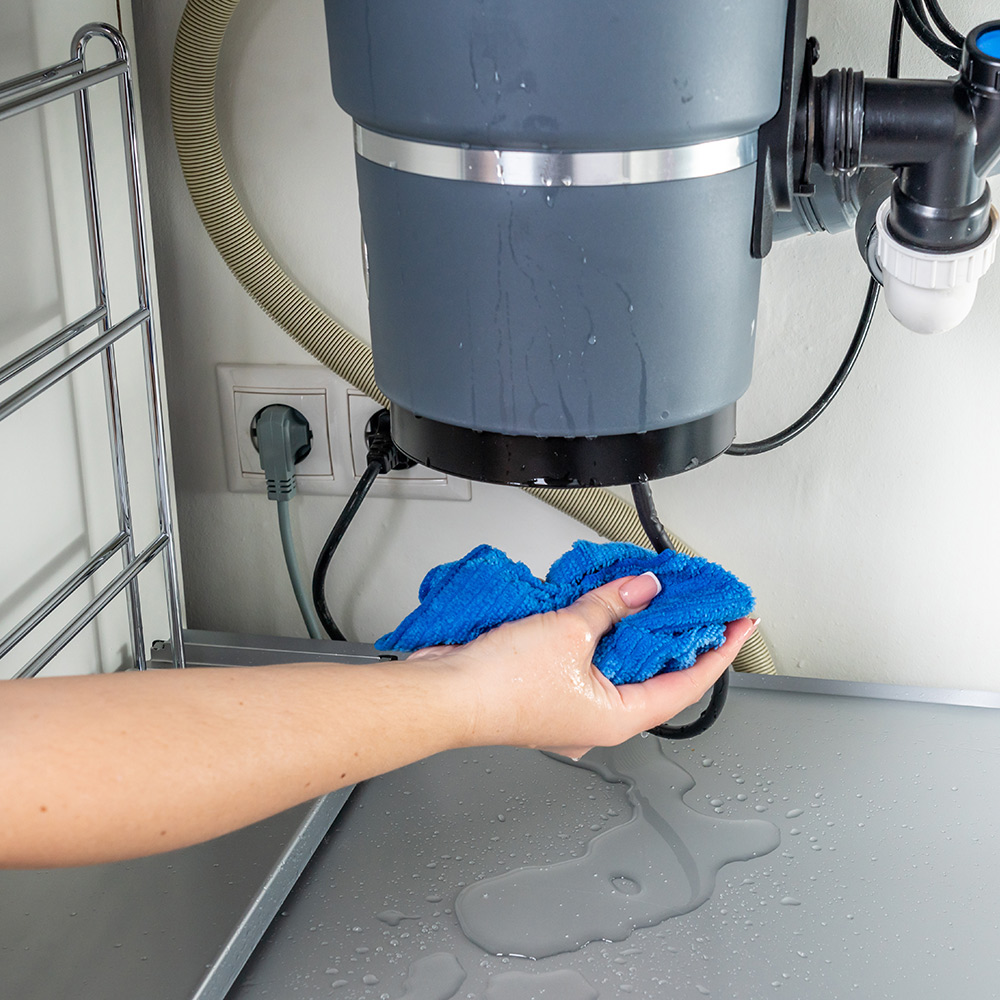My Definitive Guide to Fixing a Leaky Waste Disposal Unit
My Definitive Guide to Fixing a Leaky Waste Disposal Unit
Blog Article
Are you searching for know-how about Why Is ?

Waste disposal unit are vital kitchen home appliances that help in throwing away food waste efficiently. Nonetheless, a leaking waste disposal unit can be an aggravating and messy problem to handle. The good news is, numerous leakages can be repaired conveniently with a few straightforward steps. In this article, we will certainly discuss how to deal with a dripping garbage disposal properly.
Introduction
Waste disposal unit are installed under kitchen area sinks and are designed to shred food waste into smaller items, allowing it to pass through the plumbing system easily. While these devices are normally reliable, leakages can occur gradually as a result of deterioration, loosened links, or damages to the device.
Step-by-Step Guide to Dealing With a Dripping Waste Disposal Unit
Shut off the Power
Prior to attempting any repair work, ensure that the power to the waste disposal unit system is turned off to prevent the danger of electric shock.
Find the Leak
Identify the exact area of the leakage and establish the cause
Tighten up Connections
Make use of a wrench to tighten any type of loose links between the disposal device and the pipes system.
Replace Seals or Gaskets
If the leakage results from used seals or gaskets, remove the old components and change them with brand-new ones.
Patching Fractures or Holes
For cracks or holes in the disposal unit, use epoxy or an ideal patching material to seal the damaged location.
Determining the Resource of the Leak
Before attempting to take care of a dripping waste disposal unit, it is vital to identify the resource of the leakage. This can commonly be done via aesthetic examination or by carrying out basic tests.
Visual Examination
Evaluate the garbage disposal system meticulously for any kind of indications of water leak. Pay close attention to areas around seals, gaskets, and connection points.
Testing for Leakages
One means to examine for leaks is by running water through the disposal device and checking for any type of noticeable signs of leak.
Usual Sources Of Leakages in Garbage Disposals
Worn Seals and Gaskets
Seals and gaskets play an essential duty in stopping water from leaking out of the garbage disposal. Gradually, these components can weaken, causing leaks around the disposal device.
Loose Connections
The connections in between the garbage disposal and the plumbing system can come to be loosened with time, causing water to leak out during operation.
Fractures or Holes in the Disposal Device
Physical damage to the garbage disposal, such as cracks or openings in the housing, can additionally result in leakages.
Devices and Materials Needed for Taking Care Of a Leaking Garbage Disposal
Before starting the repair work procedure, collect the essential tools and materials, including a screwdriver, adjustable wrench, plumber's putty, substitute seals or gaskets, and epoxy or patching product for repairing splits or openings.
Examining the Waste Disposal Unit After Repair
Once the repair service is total, evaluate the garbage disposal by running water via it to guarantee that the leakage has been solved.
Preventive Upkeep Tips to Avoid Future Leakages
To avoid future leakages, it is essential to do regular upkeep on your waste disposal unit. This consists of maintaining it tidy, staying clear of putting non-food products or tough objects down the disposal, and periodically checking for leakages or other concerns.
Final thought
To conclude, repairing a dripping garbage disposal is a fairly simple procedure that can be finished with standard tools and materials. By complying with the actions outlined in this short article and exercising precautionary maintenance, you can keep your waste disposal unit in good working problem and avoid costly fixings in the future.
What to Do About a Leaking Garbage Disposal
A leaking garbage disposal often goes unnoticed until you confront a sopping cabinet, a foul-smelling puddle, or an audible drip-drip-drip from the unit. The fix can be frustrating, too, because the leak can stem from a number of components in the system. Fortunately, with a little sleuthing, you can zero in on the leak and—depending on the exact location—stop the icky oozing and repair the component that caused it. Worst case scenario, if it turns out that the garbage disposal must be replaced, installing a new one is a reasonable do-it-yourself task for those with basic plumbing skills. Read on to keep the cash you’d otherwise hand over to a pro.
Prepare to find the leak
Prior to testing the garbage disposal for leaks, unplug it at the wall outlet and turn off the power from the breaker box to prevent electrical shock. Then insert a watertight sink stopper into your sink drain and wipe the unit dry with a clean cloth. In any handy container, mix a few drops of food coloring into a few cups of water, and pour the dyed water onto the sink stopper to help you locate the leak.
Investigate the source
the top, where the disposal meets the sink drain the side, where the dishwasher hose or main drain pipe connects to the disposal or the bottom of the unit Inspect each of these locations while gliding a light-colored rag over the unit; the dyed water will readily show on the rag and reveal the location of the leak. If a leak isn’t immediately apparent, remove the sink stopper and pour a few more cups of dyed water down the sink drain, then check for leaks again. Leaks near the top of the unit are more likely to show themselves while the sink is plugged, while side and bottom leaks are more noticeable while the sink is unplugged.
The metal sink flange that sits directly inside the sink drain is typically sealed around the top with plumber’s putty (a clay-like sealant) and then secured from under the sink with bolts. If the plumber’s putty deteriorates, or the bolts loosen, the flange can no longer form a watertight seal between the sink drain and the disposal—which could cause a leak at the top of the unit.
To reseal the leaky flange, you must first detach the garbage disposal. Start by loosening the screws securing the main drain pipe to the disposal, then loosen the screws in the metal clamp securing the dishwasher hose to the disposal and detach the drain pipe and dishwasher hose from the disposal. Loosen the screws in the mounting ring that connects the disposal to the metal mounting assembly beneath the sink, then pull down the disposal and carefully set it on a clean, dry surface. Loosen the bolts in the mounting assembly with a wrench, then pull down the mounting assembly and set it near the disposal.

Hopefully you enjoyed reading our article about Tips on Fixing a Leaking Garbage Disposal. Many thanks for taking a few minutes to browse our piece of content. Make sure you set aside a second to distribute this blog post if you enjoyed it. Many thanks for taking the time to read it.
Request Estimate Report this page